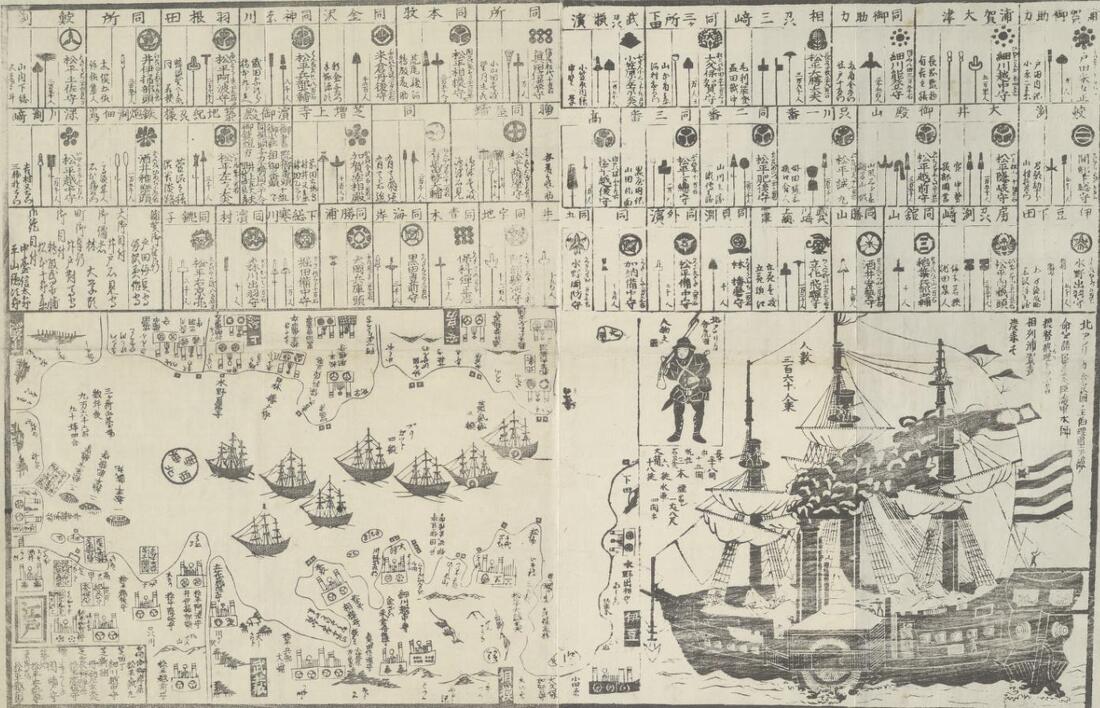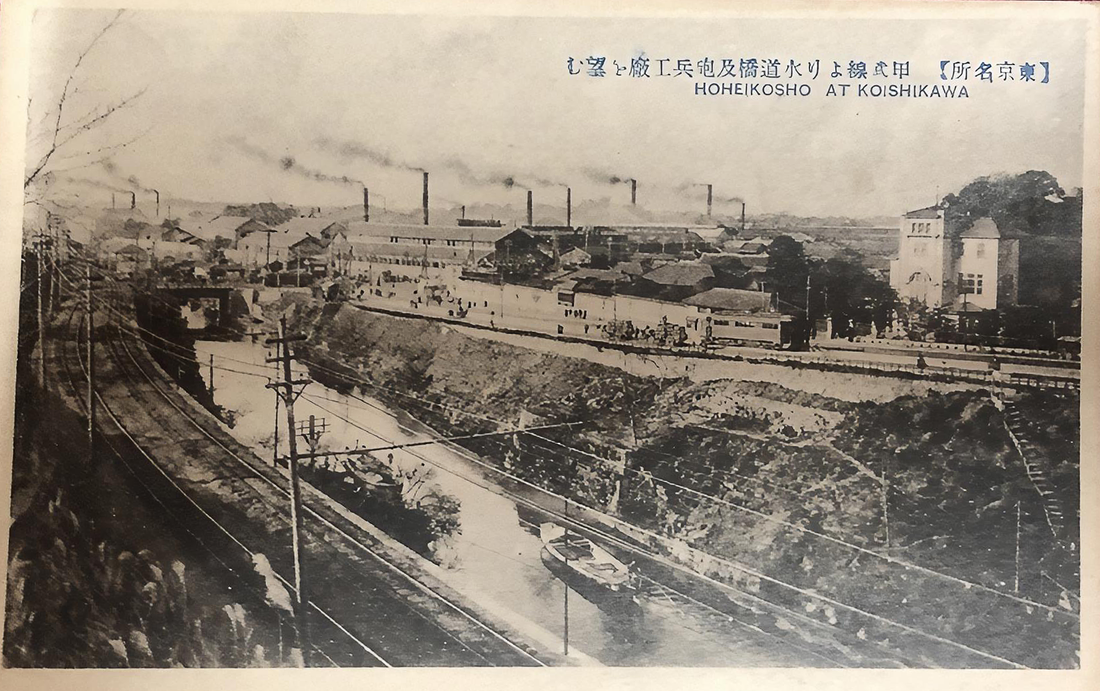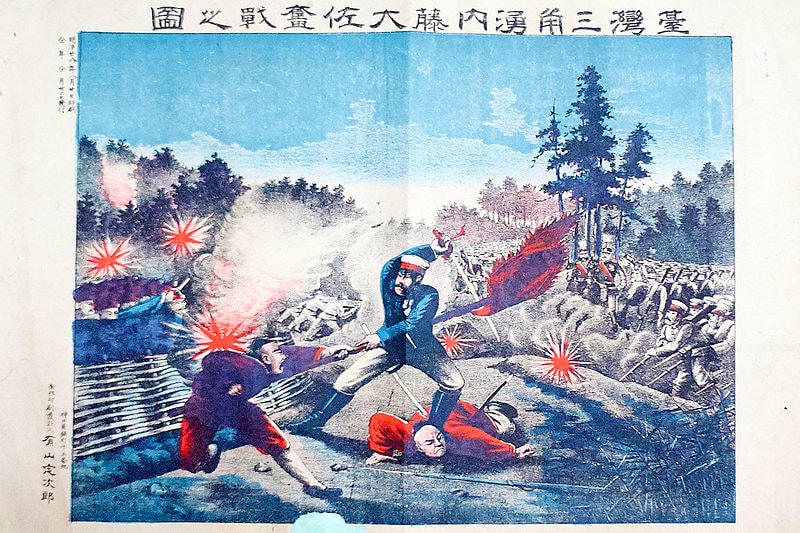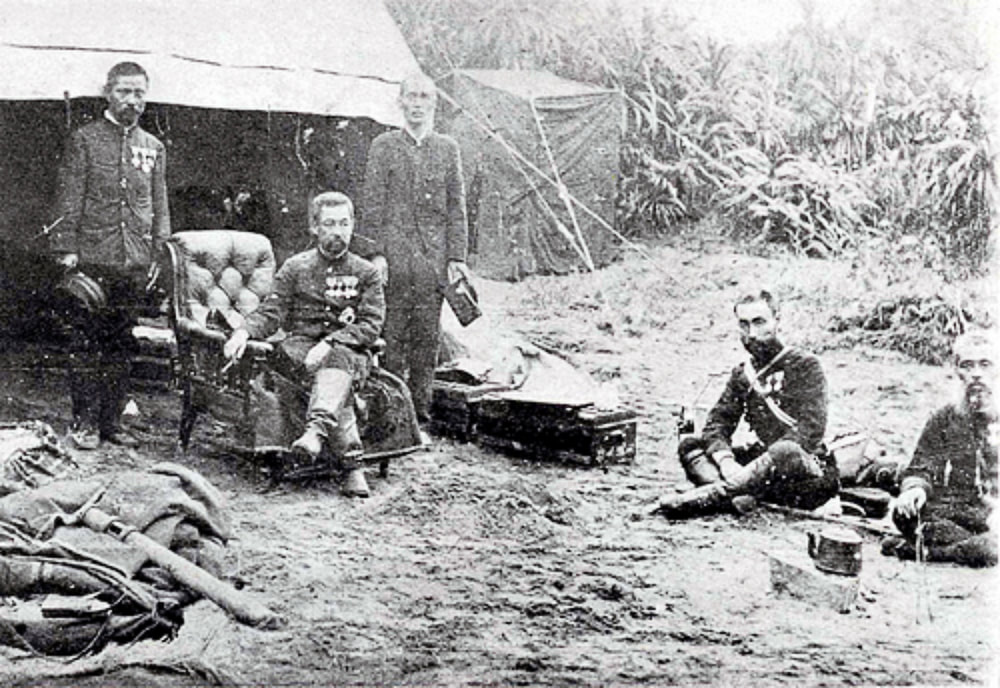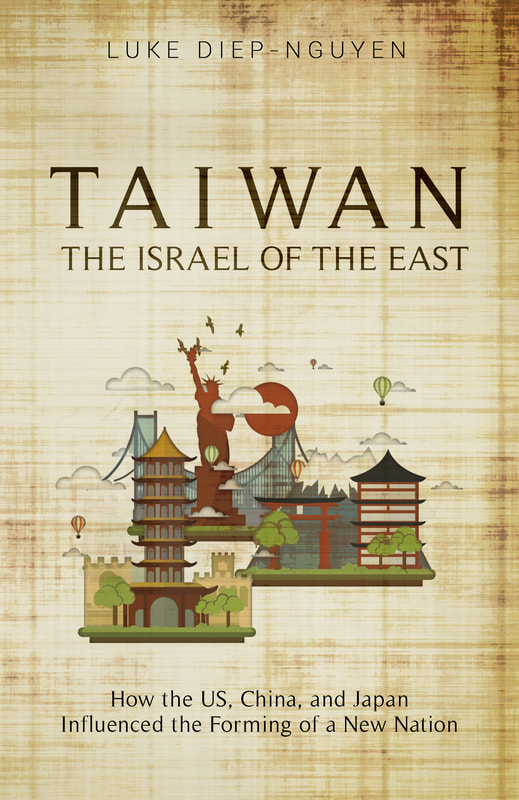- Home
- Stories
-
Internship
- Summer 2024 Internship
- Summer 2023 Internship
- Fall 2022 Internship
- Summer 2022 Internship
- Summer 2021 Internship
- Fall 2020- Spring 2021 Internship
- Summer 2020 Internship
- Fall 2019 Internship
- Summer 2019 Internship >
- School Year 2018-2019 Internship
- Summer 2018 Internship >
- Fall 2017 Internship
- Summer 2017 Internship >
- Books
- Archives
-
Resource Page
-
Supplementary Research Guides
>
- Unit 731 - Guide >
-
Philippines' Resistance - Guide
>
- Philippines World War II Timeline
- The Japanese Invasion & Conquest of the Philippines
- Bataan Death March
- Formation of Underground Philippines Resistance
- Supplies of the Guerrilla Fighters
- The Hukbalahap
- Hunter's ROTC
- Marking's Guerrillas
- United States Army Forces in the Philippines of Northern Luzon (USAFIP-NL)
- The Aetas
- Chinese and Filipino-Chinese Nationalist Guerrilla Units
- The Female Faces of the Philippine Guerrillas
- Rising Sun Flag - Guide >
- Pinay Guerrilleras - Guide >
- Fall of Singapore - Guide >
- Three Years and Eight Months - Guide >
- Siamese Sovereignty - Guide >
- The Khabarovsk War Crimes Trial - Guide >
- Unit 731 Cover-up : The Operation Paperclip of the East - Guide >
- Marutas of Unit 731 - Guide >
- Prince Konoe Memoir - Guide >
- Competing Empires in Burma - Guide >
- Battle of Shanghai - Guide >
- Ishi Shiro - Guide >
- Taiwan The Israel of the East - Guide >
- Seeking Justice for Biological Warfare Victims of Unit 731 - Guide >
- Rice and Revolution - Guide >
- Clash of Empires - Guide >
-
Hunger for Power and Self-SufficiencyI - Guide
>
- The Influence of War Rations on Post-War Culinary Transformations
- How World War II Complicated Food Scarcity and Invention
- American Military Innovations
- Government-Sponsored Food Inventions in Europe during World War II
- Feeding the Army: The Adaptation of Japanese Military Cuisine and Its Impact on the Philippines
- Mixed Dishes: Culinary Innovations Driven by Necessity and Food Scarcity
-
Denial A Quick Look of History of Comfort Women and Present Days’ Complication - Guide
>
- The Comfort Women System and the Fight for Recognition
- The Role of Activism and International Pressure
- The Controversy over Japanese History Textbooks
- The Sonyŏsang Statue and the Symbolism of Public Memorials
- Activism and Support from Japanese Citizens
- The Future of Comfort Women Memorials and Education
- Echoes of Empire: The Power of Japanese Propaganda - Guide >
- Lesson Plans >
-
Supplementary Research Guides
>
Perry Expedition to Japan
Commodore Matthew Perry arrived in Japan in 1853, using gunboat diplomacy to force Japan to abandon their isolation policy. Over the course of the next few years, Perry, with many U.S. commissioners and consuls, set up treaties with the Japanese government to open their ports and allow foreign trade, particularly with Western nations, including the U.S., the Netherlands, and Russia. On July 29, 1858, the Treaty of Amity and Commerce was proposed to allow U.S. ships and merchants to enter Japanese ports freely and, in return, the U.S. would protect Japanese naval expeditions. American diplomats and the Japanese government would settle ports in which the Americans would be allowed to control. As a result of this treaty, the Japanese relinquished power to dictate municipal and harbor regulations to the Americans. The Tariffs Convention of 1866 would be one of the most significant treaties regarding the Japanese government’s power, particularly concerning its foreign policies. All goods imported into Japan and transported by Japanese to areas within its empire would not have to pay taxes. Furthermore, both foreign and Japanese would be allowed to make payments with one another freely using their respective currency. The Japanese coin value dropped due to the increased use of foreign coins in Japan, as European merchandise entered the Japanese market at high prices.
There was a need to reform Japan’s political and social systems. Shoguns and daimyos led the feudal government while the emperor and imperial family served only as a religious entity and figurehead with few political contributions, which mostly came through the guidance of advisors. When the feudal government was overthrown, the emperor became head of the government with parliament houses and cabinet members acting as advisors, adopted from Western government systems. This change represented a blend of religious devotion to the imperial family, particularly the emperor, and political nationalism. With the emperor as leader, there would be a religious devotion to the head of the state. The two parliament houses contained the House of Peers, whose members were imperial family members and nobles; and the House of Commons, whose members were elected by the public. Voting privileges were granted to 25-year old males who lived in their district for more than a year and paid direct national taxes.
Japan’s industrial growth also caused urban population growth. Tokyo’s population increased from approximately 800,000 to over a million. Osaka’s population grew from approximately 290,000 to 360,000 residents. Kyoto’s population increased from 13,000 to 80,000. By the end of 1886, of Japan’s 38 million citizens, 3.5 million lived in cities, which grew from 20,000 before the industrial revolution. The advancements of industry and production enabled Japan to spread its imperial conquest over foreign competitors such as China and Russia at the turn of the 20th century. Japan’s victory over China proved the capability and superiority of modern and Western implementations.
Despite Japan’s rapid economic and industrial growth, improvement, and profit from natural resources, its materials remained limited to properly compete with foreign nations, creating a disadvantage when it came to rate of production. The need for more resources, materials, and labor force incentivized the desire for imperialism and expansionism, which was being conducted by Western nations. The end of the 19th century made way for Japan to launch expansive campaigns, most notably towards Manchuria, Korea, and Taiwan.
Japan’s industrial growth also caused urban population growth. Tokyo’s population increased from approximately 800,000 to over a million. Osaka’s population grew from approximately 290,000 to 360,000 residents. Kyoto’s population increased from 13,000 to 80,000. By the end of 1886, of Japan’s 38 million citizens, 3.5 million lived in cities, which grew from 20,000 before the industrial revolution. The advancements of industry and production enabled Japan to spread its imperial conquest over foreign competitors such as China and Russia at the turn of the 20th century. Japan’s victory over China proved the capability and superiority of modern and Western implementations.
Despite Japan’s rapid economic and industrial growth, improvement, and profit from natural resources, its materials remained limited to properly compete with foreign nations, creating a disadvantage when it came to rate of production. The need for more resources, materials, and labor force incentivized the desire for imperialism and expansionism, which was being conducted by Western nations. The end of the 19th century made way for Japan to launch expansive campaigns, most notably towards Manchuria, Korea, and Taiwan.
Japanese occupation of Taiwan
On April 17, 1895, the Chinese signed the Treaty of Shimonoseki, following the disastrous defeat by the Japanese in the First Sino-Japanese War. This treaty marked the end of the war and ceded many Chinese-owned islands to the Japanese, including Taiwan and the Pescadores Islands chain. While the agreement gave Taiwan to the Japanese, the Japanese did not take over Taiwan. Taiwan declared itself an independent republic with a governor and constitution. Realizing Taiwan could be of economic and strategic importance, Japan invaded Taiwan and conquered Taiwan by the end of 1895, but continued to struggle with guerrilla resistance until the end of the century.
By the 1900s to 1910s, Taiwan had become Japan’s most important trading center. During the first few years of its occupation, Japan’s imports and exports from Taiwan exceeded 7.8-million-yen worth. Within ten years, by the early 1900s, that worth climbed to over 37 million yen. The primary exported goods were tea, rice, camphor oil, and coal. Valued imported goods included opium, kerosene oil, cotton, and timber. From both imported and exported goods, the Japanese in Taiwan secured four significant monopolies based on these goods. The monopolies of Taiwan included opium, camphor, tobacco, and salt.
By the 1900s to 1910s, Taiwan had become Japan’s most important trading center. During the first few years of its occupation, Japan’s imports and exports from Taiwan exceeded 7.8-million-yen worth. Within ten years, by the early 1900s, that worth climbed to over 37 million yen. The primary exported goods were tea, rice, camphor oil, and coal. Valued imported goods included opium, kerosene oil, cotton, and timber. From both imported and exported goods, the Japanese in Taiwan secured four significant monopolies based on these goods. The monopolies of Taiwan included opium, camphor, tobacco, and salt.
Before the Japanese occupation, mass addiction to opium developed among the Taiwanese population, creating a massive market for opium imports. When the Japanese occupied Taiwan, they took over and created a monopoly on the opium industry. However, instead of expanding on the monopoly, the Japanese attempted to increase public health and lessen widespread opium addiction. By controlling the opium business and regulating the distribution, the Japanese hoped to discourage opium use and decrease the number of opium users. The only pre-Japanese occupation monopoly was salt. When the Japanese assumed control of the salt monopoly industry, they expanded the salt manufacturing rate and the amount by growing the salt farms from 1700 acres to 60,000 acres. The salt would be provided to financially support Japan.
Taiwan became essential to Japan as an economic and agricultural, supplying Japan with food sources, metals, and other resources not domestically available. As Taiwan used its resources to help supply Japan, Japan helped industrialize Taiwan to increase production rates, which increased supply rates to Japan. Taiwan’s development was built on agricultural production rates, modernization, and industrialization of Taiwan, along with population growth. Taiwan’s manufacturing was influenced by imported industrial products and the construction of modern industries and factories. Taiwan’s agricultural and industrial development were essential investments for both Taiwan and Japan because the industrialization of Taiwan and construction of modern industrial factories improved the agrarian production rate, mining of valuable natural materials, such as metals, and increased travel time between ports in Taiwan which increased export and import rates. The industrial growth helped develop and industrialize Taiwan to such an increased rate that by 1933, 7,000 factories were constructed. The growth rate of the sugar industry, the most crucial supply to Japan, increased 6% annually from 1912 to 1940.
Taiwan became essential to Japan as an economic and agricultural, supplying Japan with food sources, metals, and other resources not domestically available. As Taiwan used its resources to help supply Japan, Japan helped industrialize Taiwan to increase production rates, which increased supply rates to Japan. Taiwan’s development was built on agricultural production rates, modernization, and industrialization of Taiwan, along with population growth. Taiwan’s manufacturing was influenced by imported industrial products and the construction of modern industries and factories. Taiwan’s agricultural and industrial development were essential investments for both Taiwan and Japan because the industrialization of Taiwan and construction of modern industrial factories improved the agrarian production rate, mining of valuable natural materials, such as metals, and increased travel time between ports in Taiwan which increased export and import rates. The industrial growth helped develop and industrialize Taiwan to such an increased rate that by 1933, 7,000 factories were constructed. The growth rate of the sugar industry, the most crucial supply to Japan, increased 6% annually from 1912 to 1940.
Learn More
Taiwan, the Israel of the East:
|
|
Pacific Atrocities Education
730 Commercial Street San Francisco, CA 94108 415-988-9889 |
Copyright © 2021 Pacific Atrocities Education.
We are a registered 501 (c)(3) charity. |
- Home
- Stories
-
Internship
- Summer 2024 Internship
- Summer 2023 Internship
- Fall 2022 Internship
- Summer 2022 Internship
- Summer 2021 Internship
- Fall 2020- Spring 2021 Internship
- Summer 2020 Internship
- Fall 2019 Internship
- Summer 2019 Internship >
- School Year 2018-2019 Internship
- Summer 2018 Internship >
- Fall 2017 Internship
- Summer 2017 Internship >
- Books
- Archives
-
Resource Page
-
Supplementary Research Guides
>
- Unit 731 - Guide >
-
Philippines' Resistance - Guide
>
- Philippines World War II Timeline
- The Japanese Invasion & Conquest of the Philippines
- Bataan Death March
- Formation of Underground Philippines Resistance
- Supplies of the Guerrilla Fighters
- The Hukbalahap
- Hunter's ROTC
- Marking's Guerrillas
- United States Army Forces in the Philippines of Northern Luzon (USAFIP-NL)
- The Aetas
- Chinese and Filipino-Chinese Nationalist Guerrilla Units
- The Female Faces of the Philippine Guerrillas
- Rising Sun Flag - Guide >
- Pinay Guerrilleras - Guide >
- Fall of Singapore - Guide >
- Three Years and Eight Months - Guide >
- Siamese Sovereignty - Guide >
- The Khabarovsk War Crimes Trial - Guide >
- Unit 731 Cover-up : The Operation Paperclip of the East - Guide >
- Marutas of Unit 731 - Guide >
- Prince Konoe Memoir - Guide >
- Competing Empires in Burma - Guide >
- Battle of Shanghai - Guide >
- Ishi Shiro - Guide >
- Taiwan The Israel of the East - Guide >
- Seeking Justice for Biological Warfare Victims of Unit 731 - Guide >
- Rice and Revolution - Guide >
- Clash of Empires - Guide >
-
Hunger for Power and Self-SufficiencyI - Guide
>
- The Influence of War Rations on Post-War Culinary Transformations
- How World War II Complicated Food Scarcity and Invention
- American Military Innovations
- Government-Sponsored Food Inventions in Europe during World War II
- Feeding the Army: The Adaptation of Japanese Military Cuisine and Its Impact on the Philippines
- Mixed Dishes: Culinary Innovations Driven by Necessity and Food Scarcity
-
Denial A Quick Look of History of Comfort Women and Present Days’ Complication - Guide
>
- The Comfort Women System and the Fight for Recognition
- The Role of Activism and International Pressure
- The Controversy over Japanese History Textbooks
- The Sonyŏsang Statue and the Symbolism of Public Memorials
- Activism and Support from Japanese Citizens
- The Future of Comfort Women Memorials and Education
- Echoes of Empire: The Power of Japanese Propaganda - Guide >
- Lesson Plans >
-
Supplementary Research Guides
>
